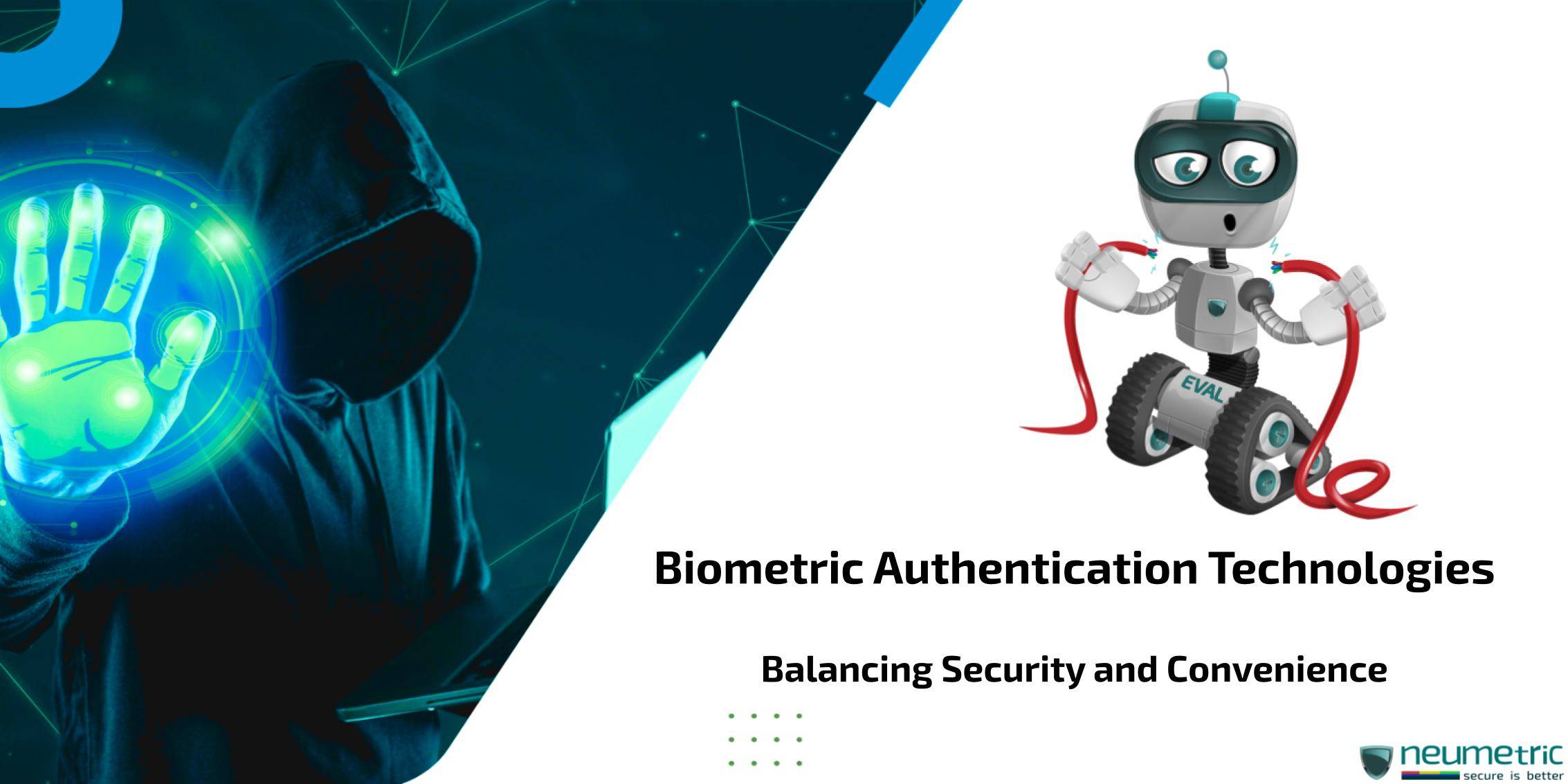Table of Contents
ToggleIntroduction
In an era where digital footprints define our lives, the need for robust authentication methods has never been more critical. Imagine unlocking your smartphone with just a glance or gaining access to a secure facility with a simple touch. This seamless, futuristic reality is powered by biometric authentication technologies.
Biometric authentication stands as a sophisticated approach harnessing distinctive biological or behavioural markers, from fingerprints & facial features to iris patterns & voiceprints, to verify identity, where our unique physical or behavioural traits serve as the keys to unlock the digital realm.
Beyond the convenience of a fingerprint scan or facial recognition, it is interesting to explore the delicate equilibrium between fortifying security & providing user-friendly experiences. As the reliance on biometrics grows, so too do the complexities & debates surrounding their implementation.
Understanding Biometric Authentication
Biometric authentication stands as the vanguard in the realm of digital security, utilising distinct biological or behavioural characteristics to verify & grant access. These unique identifiers, ranging from fingerprints & facial features to iris patterns & voiceprints, form the cornerstone of a highly personalised authentication system.
Mechanisms of Biometric Authentication
- Biometric Data Capture: Exploring the methods employed to gather & store biometric data.
- Matching Algorithms: Understanding the intricate algorithms that compare captured biometric data with stored templates for authentication.
Types of Biometric Data
- Fingerprint Recognition: Examining the widespread use of fingerprints as a reliable identifier.
- Facial Recognition: Exploring the advancements & challenges in this visually-based authentication.
- Iris Scanning: Delving into the intricacies of iris-based authentication & its accuracy.
- Voice Recognition: Discussing the unique aspects & applications of voice-based authentication.
Advantages & Limitations
- Advantages of Biometric Authentication: Highlighting its accuracy, convenience & resistance to unauthorised access.
- Limitations & Challenges: Discussing issues such as susceptibility to spoofing, privacy concerns & technological limitations.
.
Security Aspects of Biometric Authentication
While biometric authentication offers a promising frontier in security, its implementation raises critical considerations regarding vulnerabilities, data protection & potential breaches.
Security Measures in Biometric Systems
- Encryption & Storage: Explaining the encryption protocols & secure storage methods for biometric data.
- Multi-factor Authentication: Discussing the integration of biometrics within multi-layered authentication systems for enhanced security.
- Liveness Detection: Exploring techniques to ensure the biometric data captured is from a live, authentic source rather than a replica.
Vulnerabilities & Risks
- Spoofing & Biometric Fraud: Discussing methods used to deceive biometric systems & potential countermeasures.
- Database Breaches: Examining the implications of a breach involving biometric data & its consequences.
Continuous Improvement in Security
- Research & Development: Exploring ongoing efforts to enhance biometric system security through technological advancements.
- Ethical Hacking & Testing: Discussing the role of ethical hacking & rigorous testing in identifying vulnerabilities & strengthening security measures.
Balancing Security with User Convenience:
The harmonious coalescence of robust security measures & user-friendly experiences stands as a pivotal challenge in the realm of biometric authentication.
Importance of User-Centric Design
- User Experience (UX) in Biometric Authentication: Highlighting the significance of seamless & intuitive user interactions.
- Accessibility Considerations: Discussing the need for inclusive designs accommodating diverse user needs.
Challenges in Achieving Balance
- Trade-offs Between Security & Convenience: Exploring the inherent tensions between heightened security measures & user convenience.
- Usability vs. Security: Discussing the delicate balance between ensuring ease of use & maintaining stringent security standards.
Strategies for Enhanced User Convenience
- Adaptive Authentication: Exploring methods that dynamically adjust authentication levels based on user behaviour & context.
- Biometric Technology Integration: Discussing the integration of biometrics into everyday devices for seamless user experiences.
Educating Users on Security
- User Awareness & Training: Highlighting the importance of educating users on best practices for utilising biometric authentication securely.
- Transparency & Consent: Discussing the significance of transparent information sharing & obtaining user consent regarding biometric data usage.
Future Trends in User-Centric Authentication
- Advancements in User Interface (UI): Exploring innovations in UI/UX design for biometric authentication.
- Behavioural Biometrics: Discussing the integration of behavioural patterns for authentication purposes & its potential impact on user convenience.
Ethical & Privacy Concerns in Biometric Authentication
The pervasive use of biometric authentication technologies raises profound ethical & privacy considerations, challenging the boundaries of individual rights & technological advancements.
Ethical Implications of Biometric Data Usage
- Informed Consent: Discussing the importance of obtaining explicit consent before collecting & utilising biometric data.
- Ownership & Control: Examining the rights of individuals concerning their biometric data & its usage by various entities.
Privacy Risks & Implications
- Data Security & Protection: Highlighting the vulnerability of biometric data to breaches & the potential consequences.
- Surveillance Concerns: Discussing the implications of widespread biometric surveillance on individual privacy rights.
Regulatory Framework & Legal Considerations
- Existing Regulations: Overviewing current legal frameworks governing biometric data usage across different jurisdictions.
- Challenges in Regulation: Discussing the complexities & gaps in regulating biometric authentication technologies effectively.
Ethical Best Practices in Biometric Implementations
- Privacy by Design: Advocating for incorporating privacy-enhancing features into the architecture of biometric systems.
- Data Retention & Deletion Policies: Discussing the importance of clear policies regarding the retention & deletion of biometric data.
Balancing Innovation & Ethical Standards
- Ethical Oversight in Research & Development: Exploring the role of ethical boards & guidelines in shaping the development of biometric technologies.
- Ethical Decision-Making in Industry Practices: Discussing the responsibility of companies in ensuring ethical use of biometric data.
Advancements in Biometric Authentication Technologies
The evolution of biometric authentication continues to undergo remarkable advancements, fostering innovation in security, accuracy & user experience.
Emerging Technological Innovations
- Biometric Fusion: Exploring the integration of multiple biometric modalities for heightened accuracy & security.
- Deep Learning & AI: Discussing the role of artificial intelligence in enhancing biometric recognition systems.
Enhanced Security Measures
- Anti-Spoofing Techniques: Exploring sophisticated methods to detect & counteract spoofing attacks.
- Blockchain Integration: Discussing the potential of blockchain technology in securing biometric data storage & authentication processes.
Improved User Experience
- Continuous Authentication: Exploring seamless authentication methods that continuously verify user identity during device interaction.
- Biometric Wearables: Discussing the integration of biometrics into wearable devices for convenient & secure authentication.
Biometric Authentication in Diverse Settings
- Biometrics in IoT & Smart Devices: Discussing the integration of biometric authentication in the Internet of Things (IoT) ecosystem.
- Biometrics in Healthcare: Exploring applications of biometric authentication in healthcare for secure patient identification.
Future Prospects & Trends
- Behavioural Biometrics: Discussing the potential of analysing behavioural patterns for authentication purposes.
- Ethical AI in Biometrics: Exploring the integration of ethical principles in AI-driven biometric technologies.
Best Practices & Recommendations for Biometric Authentication
Implementing robust security measures while ensuring user convenience requires adherence to best practices & strategic approaches.
Secure Implementation Guidelines
- Data Encryption & Protection: Implementing robust encryption protocols to safeguard biometric data.
- Regular Security Audits: Conducting frequent audits to identify & mitigate potential vulnerabilities.
Multi-Factor Authentication Integration
- Layered Security Approaches: Advocating for combining biometrics with other authentication factors for enhanced security.
- Adaptive Authentication: Implementing systems that dynamically adjust authentication levels based on risk factors.
User Education & Awareness
- Training & Guidelines: Providing clear guidelines to users on secure biometric data usage & storage.
- Transparency in Data Handling: Ensuring transparency in how biometric data is collected, stored & used.
Privacy-Centric Design Principles
- Privacy by Design: Embedding privacy-enhancing features during the development of biometric systems.
- Data Retention Policies: Establishing clear policies for the retention & deletion of biometric data.
Regulatory Compliance
- Adherence to Legal Standards: Ensuring compliance with regional & international regulations governing biometric data.
- Ethical Considerations: Integrating ethical principles into the development & deployment of biometric systems.
Continuous Improvement & Innovation
- Research & Development: Investing in ongoing research to address emerging security threats & improve authentication accuracy.
- Feedback Mechanisms: Soliciting feedback from users to continuously enhance the usability & security of biometric systems.
By following these recommended best practices organisations & developers can fortify their biometric authentication systems, prioritise user privacy, comply with regulations & foster a culture of continuous improvement & innovation in this evolving landscape.
Conclusion
As these technologies evolve, the onus lies on us to foster an ecosystem that embraces security, respects privacy & champions user experiences in equal measure. From fingerprints to facial recognition & beyond, biometric authentication stands as a sentinel, leveraging our unique traits as keys to unlock digital realms. However, this evolution isn’t without its challenges; the quest to balance security imperatives with user convenience remains an ongoing pursuit.
As we conclude this journey through the realms of biometric authentication, it becomes evident that the future is teeming with possibilities. Advancements in AI-driven algorithms, the fusion of multiple biometric modalities & a heightened focus on ethical frameworks promise to further fortify these systems against emerging threats.
The trajectory ahead involves a harmonious blend of technological innovation, ethical considerations & user-centric designs. It’s a landscape where security isn’t just a defence mechanism but an amalgamation of precision, user empowerment & ethical responsibility.
FAQ
Are biometric authentication methods like fingerprint & facial recognition really secure?
Absolutely, biometric authentication methods leverage unique physical or behavioural traits, making them highly secure. However, there are potential vulnerabilities like spoofing that need robust countermeasures.
How do biometric systems ensure my privacy & protect my data?
Biometric systems often use encryption & secure storage to protect your data. They should also follow privacy-by-design principles, ensuring your information isn’t misused & has clear retention policies.
Is it possible to balance security without compromising user convenience in biometric authentication?
Absolutely! It’s a tightrope walk, but advancements in adaptive authentication & user-centric design aim to provide both security & a smooth, hassle-free experience.
What should I consider before adopting biometric authentication for my organisation?
Ensure compliance with regulations, prioritise user education on secure usage & invest in continuous improvement. Also, assess the trade-offs between convenience & security for your specific needs.
What’s the future of biometric authentication?
We’re moving toward multifaceted authentication methods, integrating behavioural biometrics & AI-driven innovations. Expect biometrics to be seamlessly integrated into more devices & industries while prioritising ethical & privacy considerations.





